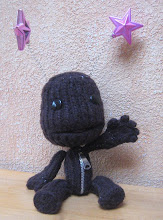“Devil Survivor” is part of the “Megami Tensei” or “MegaTen” series and translates to “reincarnation of the goddess.” The series’ title and first game were based on the first of Aya Nishitani’s Digital Devil Story series. Each “MegaTen” game has similar elements such as a high school-aged main character players can name and summoning demons in battle. The summons' names are mythological references from Greek, Japanese and Egyptian mythology among others. Another similarity is the critical philosophical choice at some point in the game which affects the following storyline and ending. Consequently, several endings are possible in “Devil Survivor.”
In “Devil Survivor,” the main objective is to escape Tokyo. An alleged gas leak caused the Japanese Ground Self-Defense Forces to block the exits in Tokyo by sealing the Yamanote train line, and all communications outside Tokyo have stopped due to a massive blackout. The guards seem suspicious to your party when you confront them, and it's as if there is something more to the lock down. Unlike other characters met in “Devil Survivor,” the guards are missing the “death clock” indicating how many days are left until they will be killed. However, characters met in the streets have less than six days on their clock, which leads your party to believe the catastrophe will occur at the end of the week.
The death clock is activated by your party’s COMP, communication player systems, which were left by the hero’s cousin, Naoya, and look remarkably like a Nintendo DS. The COMP’s main screen contains a map of Tokyo with icons next to areas that have events. Events marked with clocks take 30 minutes of time within the game, but some events will only occur at a certain hour and cannot be accessed afterward. Your hero’s email can be accessed from the COMP's menu where Naoya will send the time and place of battles along with the devil auction and fusion programs.
Once the perfect party is assembled, players can access one of the battles listed in Naoya’s email. There are also “free battles” on the map that do not pass time, but are great for leveling up characters. Starting the battle is like a typical strategy RPG. Area maps are gridded and each character must be placed before starting. Also, players may only move a certain number of spaces per turn. Your party’s demons travel with them and therefore aren’t placed separately on the map. Before the battle starts, players can use “Skill Crack” on an enemy to learn one of their abilities after they are defeated.
For a game where majority of player’s time is spent in battle, the story is intriguing because of the air of mystery around the government’s role in the lockdown. “Devil Survivor’s” multiple endings lend to its replay value, and with so many devils to collect, it’s easy to spend time in the fusion menu. My only disappointment is the lack of touch screen capabilities – even the start-up screen will not react to the stylus. Touch capabilities might have less place in a strategy RPG, but the option should still be available. Despite this, “Devil Survivor” certainly lives up to the series’ roots in futuristic, apocalyptic style gameplay and is able to seamlessly merge two battle styles into something any Japanese RPG fan can enjoy.
“Shin Megami Tensei: Devil Survivor”
Rating: A-
Platform: Nintendo DS
ESRB: T
Publisher: Atlas
Players: 1

No comments:
Post a Comment